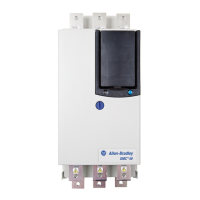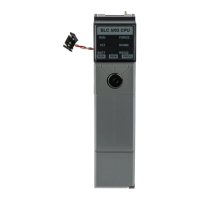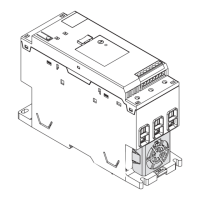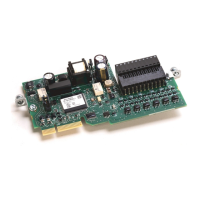530 Rockwell Automation Publication MOTION-RM002H-EN-P-February 2018
Different Time Driven and Master Driven modes can be used for different motion
types for superimposed motion. For example, the MAM can be in Time Drive
mode and the MAJ can be in Master Driven mode for the same Slave Axis.
Changing the Master Axis
The following sequence of events must be followed to transfer a Slave Axis from
one Master Axis to a second Master Axis:
• First, you must execute an MDAC instruction to reassign the Slave Axis
from the first Master Axis to the second Master Axis. This makes the
reassignment pending. The IP bit of the pending MDAC instruction is set
as an indication of the pending reassignment.
• Second, you must execute a new motion command (for example, an MAM
or MAJ). The axis becomes unlocked from the first Master Axis and
reassigned to the second Master Axis when this new motion instruction is
executed (goes IP).
Example:
The MDAC mode becomes enabled once the MDAC instruction is executed.
The MDAC mode becomes active after being enabled and a motion instruction with the MDAC speed unit
selection is executed.
If there is an active MDAC (All) on a Slave, then setting the MDAC instruction to a Motion Type other than
All causes a runtime error.
To reassign the Master once anything other than the All option is used, you must execute any of the
following:
• On the Slave Axis: MAS (All), MCS (All), MGS, MASD, MCSD, or MGSD
• On the Master Axis: MASD, MCSD, or MGSD
If you assign the same axis to be both a Master and a Slave Axis, an RSLogix 5000 software verification error
is generated.
If the slave is not moving when the master axis is changed, no problem ever occurs.
However, if the slave is in motion when the change in master axes occurs then the
final effective slave speed is computed as the product of the Master Axis speed and
the slave programmed speed. If the new final effective Slave Axis speed is less than
5% of its original speed after a change in the Master Axis, then the change is not be
allowed and the MDSC_INVALID_SLAVE_SPEED_REDUCTION error
occurs. This is always the case if the second master axis is idle (velocity=0). In this
case, the motion instruction making this request receives an
MDSC_IDLE_MASTER_AND_SLAVE_MOVING error.
If the second Master Axis is moving while the change in the master axis is being
made, look at the TrackingMaster instruction status bit of the Motion Control
words. The Motion Control words of the motion instruction that is performing
the change displays when the change in masters is finished.
There are two reasons why the slave might accelerate. One, when the master
driving the slave is accelerating and two, when the slave is accelerating due to the
programmed acceleration in a new instruction.

